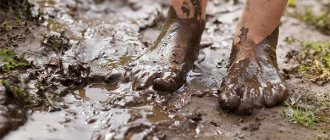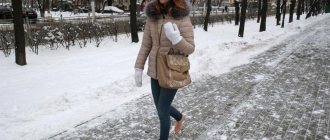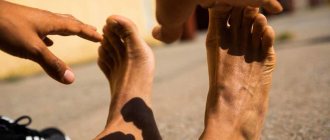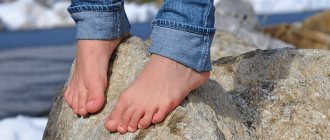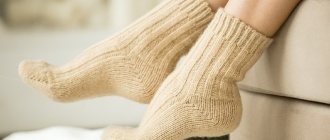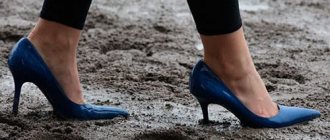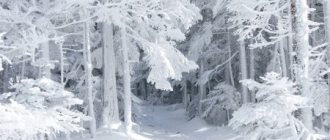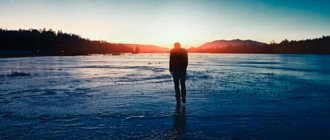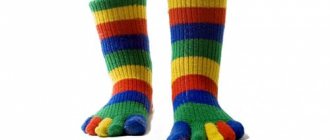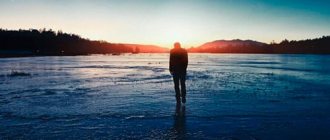The benefits of walking barefoot have been known since ancient times. Residents of Egypt, Rome, and Ancient Greece regularly took barefoot walks, and children were allowed to wear shoes from the age of 18. It has already been proven that The sole is the most reflexogenic zone in humans. By pressing on points located on the foot, you can achieve a certain effect both on the body as a whole and on certain organs and systems. Let's talk about walking barefoot: how useful is it, what can be treated in this way, what should you walk on?
Walking barefoot: what are the benefits?
The well-known hygienist S. Kneipp in Europe uses the slogan in his practice: “ One step barefoot - plus one minute of life . Modern doctors have talked and talked about the benefits of barefoot walking, and it’s not surprising. Hiking with bare legs brings the following benefits to the human body.
- Stimulation of nerve endings, which has a beneficial effect on the nervous system.
- The risk of developing varicose veins is reduced due to the outflow of blood from the lower extremities, which strengthens the walls of the veins, blocking their stretching.
- Increasing immunity by hardening the body. Walking barefoot on the ground in the fresh air is especially beneficial for children.
- Prevention of flat feet. Walking on uneven surfaces allows you to correct the instep of your foot.
- Correction of physiological disorders of the feet . When walking barefoot, the muscles begin to actively contract, strengthening. The foot is aligned, acquiring a normal position.
- Impact on acupuncture points of the foot improves blood circulation, and this is a natural prevention of cardiovascular diseases (hypertension, heart attack).
- Improves the condition of the skin on the heels and soles . Walking barefoot on sand, earth, or asphalt is a kind of natural peeling of the skin.
Interesting: Socrates and other ancient philosophers argued that walking barefoot sharpens a person's mental abilities.
Walking barefoot on sand: benefit or harm for children and adults?
- An equally useful exercise for the feet is walking barefoot in the sand. The specificity of this type of movement is that all the joints of the foot are free , since they are not constrained by shoes, and the sand, which has a viscous surface, forces the leg muscles to actively work.
- Small grains of sand in abundance irritate the receptors of the sole, stimulating the work of many organs, incl. brain, which interacts much worse with the foot when it is in shoes rather than free. This way, signals from the brain to the feet and back travel much faster, which affects a more confident step, the correct position of the joints, the contraction of the muscles involved in walking, the position of the spine and the general coordination of movements.
- Sea or river sand is very effective for walking barefoot . The main thing is to be careful not to step on glass fragments, sharp sticks and other wounding objects that may be located in the lower layers of sand.
This kind of walking is very useful
- The softer the sand, the more the foot sinks into it, and if you try to walk quickly, then a fairly strong load will be placed on the tendons - such walking is comparable in effectiveness to jogging.
- Warmed sea or river sand will bring significant benefits (it is even acceptable for your feet to feel hot when stepping on it) - such walking is recommended for those who suffer from joint diseases. It increases their mobility, reduces inflammation, and reduces pain when walking. Hot sand for walking is no less useful for those who have problems with the respiratory and urinary systems, as well as for women with gynecological diseases.
- Cool sand also has a certain effect - walking on it reduces weakness and tremors of the hands if they are the result of chronic stress. At sea, you can use wet sand to prevent fungal diseases: if you periodically bury your toes in it, the nail plates become stronger and less susceptible to fungus.
- Walking on sand is also good for the skin, as it reduces the likelihood of calluses on the feet and cracked heels. It is very good to alternate walking on dry and wet sand. In the first case, the surface helps to cushion the limb, using greater forces due to its softness and instability; in the second, the tread is more stable, the muscles are less tense, which reduces the risk of a possible sprain or fall.
Children are especially recommended to walk on sand, since it, like grass, is a fairly soft surface and at the same time creates the necessary stress for the muscles. You need to accustom your baby to walking on sand in the summer, when he is warmed up, starting from 10-15 minutes.
The harm of walking barefoot
Although there are many listed advantages of walking barefoot, there are also negative components of this process.
- Walking barefoot can cause injury . Cuts, wounds, and bruises can occur due to sharp stones, glass and other debris lying on the ground.
- Parasite bite . Walking on the grass in the spring can result in a tick bite.
- to catch a fungus while walking barefoot, if you walk near places where garbage or sewage accumulates, as well as in public places.
You should not resort to barefoot walking therapy if you have:
- inflammation of the pelvic organs;
- arthritis;
- rheumatism;
- colds.
How to teach a child to walk barefoot?
- Regardless of what kind of coating is used - natural or a special rug, you need to start by getting used to it. How to teach a child to walk barefoot? Let the child stand quietly and walk with his back straight.
- The next stage is alternating walking on heels and toes at different speeds, rolling the leg from the heel . Then you can start running and jumping.
- You should not walk barefoot for more than half an hour. It’s better to let the child take a break, during which he can, while sitting, bend and straighten his toes, connect his feet, and slide them in a circle on the selected surface.
How to walk barefoot correctly?
To get the most out of barefoot walking, you need to do it correctly. It would seem that he took off his shoes and went, but no. Let's look at the rules for proper walking barefoot.
- Choose the right surfaces for barefoot walking. Relief surfaces are considered ideal. Walking on pebbles, sand, hay, and grass has a positive effect on the body, but constantly walking on the flat floor of an apartment is undesirable, as it can cause foot deformation.
- Change the terrain for barefoot walking. Constantly walking only on pebbles is good, but it is better to constantly change the surfaces for barefoot walking. This way, maximum pressure will be applied to all points on the foot.
- Walk barefoot at certain times of the year, in appropriate weather. Seasoned people can afford to walk in the snow, cool autumn soil, or yet-to-be-heated spring sand. For beginners, summer walks without excessive freezing will be enough.
- Combine barefoot walking with physical activity . This will help keep the whole body in good shape, and the body will not gain extra pounds.
- Always look at your step, this will protect you from possible foot injury. Don't walk on slippery rocks.
How to start hardening barefoot
The best time to start hardening procedures is the end of spring and the beginning of summer. Before you start walking barefoot - hardening, you need to familiarize yourself with the general rules of hardening and strictly adhere to them. According to these rules, the intensity of the impact should increase gradually, the impact should be regular and combined with other hardening procedures, and it is necessary to carefully monitor the condition of the body. That is why hardening by walking barefoot should begin only with short-term contact with relatively warm surfaces and in the absence of illness.
Hardening: walking barefoot on the ground without shoes
Walking barefoot strengthens the body. How does this happen? The vital activity of the human body directly depends on innate and acquired reflexes.
Scientists have proven that when you lower your feet into cold water of 12-14 degrees, the temperature of the nasal mucous membranes reflexively decreases by 2-5 degrees. After 2–3 weeks of daily procedures of taking cool baths, the temperature of the nasal mucosa remains stable.
The hardening method has a similar principle. Daily barefoot walks on grass with dew increase the layer of horny cells on the foot. This helps to avoid hypothermia, and an additional bonus of such hardening is the mechanical effect on the sensitive nerve endings of the reflexogenic zones. This helps minimize the risk of foot hypothermia and also reduces sensitivity to cold. After regular walks in the dew, you can even walk in the snow.
Healthy barefoot walking for hardening should begin in the summer in order to get used to new sensations and prepare the body and immunity for a further decrease in the temperature of the impact on the feet.
Walking on wet grass on a cold morning without preparation can lead to respiratory viral diseases.
Walking barefoot on a special rug: benefit or harm for children and adults?
- If the goal is to massage the lower extremities in order to activate the necessary biologically active points, then you can use a special massage mat.
- If you do this regularly, the blood supply to the body improves, pain in the legs and spine decreases, and overall well-being improves . People become less susceptible to fatigue and insomnia.
It is especially useful for children to walk on the mat.
Recommendations for walking on a massage mat are:
- The need to reduce overall stress in the body.
- Clubfoot.
- Starting from the age of one - to prevent flat feet, as well as to ensure that the foot forms correctly.
- For hypertonicity, dystonia - in order to relieve muscle tension.
The choice of material for an orthopedic massage mat is quite wide, but the main condition for quality is the availability of documents confirming its hygienic registration.
- Most often, silicone massage mats are used for preventive purposes when there is a risk of flat feet, as well as to generally strengthen the body. This is facilitated by the uneven surface of the mat, imitating a scattering of pebbles or grass.
- There are also acupuncture mats, the edges of which resemble small needles. Their positive effect is to relieve muscle tension and improve blood circulation. Stimulation of endorphin production during a massage on such a mat helps speed up metabolism and strengthen the immune system.
- Puzzle rugs have different hardnesses and, despite the fact that they are for children, can also be used for adults. They are good for incipient flat feet.
- On hemispherical rugs with protruding spikes of slight rigidity, you can additionally train the vestibular system, since the semicircular surface teaches you to maintain balance and improves coordination of movements.
Temporary contraindications for the use of massage mats are the presence of injuries or cuts on the foot or fungal diseases.
There is a general rule for all special orthopedic mats: the younger the child, the softer the surface of the massager should be.
- In addition, when choosing a product material for children, you should take into account the need for frequent washing. Before you start walking on a mat, it is better to consult with an orthopedic doctor.
Walking barefoot in the snow: the right approach
Human feet are designed to walk barefoot (as nature intended). The epidermis of the feet has built-in special thermoregulation systems that allow the sole to adapt to any temperature. Modern man, who has been wearing shoes since childhood, has lost the primordial power of walking barefoot. With stable training, cellular memory “wakes up” and a person can walk barefoot at temperatures of minus 5–10 degrees.
Before you go barefoot into the snow, you need to harden yourself. How to do this correctly has already been described above. Now let's talk about the rules of walking barefoot in the snow.
- The feet are warmed by blood flow, but standing in one place can lead to frostbite. Walk in the snow, don't stand still. Be sure to move your fingers so that the blood enters the most distant peripheral vessels.
- When walking barefoot in the snow, keep your body warm. Dress for the weather, since when it freezes, the movement of blood is not so active, it reaches the feet more slowly, and this is not necessary when walking in the snow.
- Numbness of the sole does not mean frostbite. Loss of sensation is a natural reaction to exposure to cold. You should sound the alarm if: - there is severe pain in the sole; - you can’t feel the sole completely; - my fingers turned white. In such cases, go warm and put on shoes.
- When walking in the snow, your feet become numb and have poor feeling of the surface you are walking on. To avoid damaging your feet, you need to be careful where you step . Step on your entire foot, the pace of walking should be calm.
- After walking barefoot in the snow, wash your feet with cool water and lubricate them with rich cream.
Adviсe:
- The soles begin to stick to the surface you walk on - it’s time to end the procedure.
- Do not walk on sharp ribbed snow formed from melted “porridge” - you can cut your feet.
- Do not run in the snow, as this can damage your feet.
Is there any harm from walking barefoot, to whom is it contraindicated?
The skin of a modern person's foot is quite thin and delicate, and can be easily injured. Even if you regularly walk without shoes, the soles will not harden enough to resist injury. If the integrity of the skin is damaged, there is a high probability of entry of pathogenic microorganisms that cause inflammation.
Walking on cold or hot surfaces without shoes is contraindicated in case of diseases of the pelvic organs. For gout and rheumatism, this should be done with caution.
The absolutely flat, smooth surface of modern floor coverings - laminate, linoleum, thin carpets - is dangerous for people predisposed to flat feet. The natural curve of the arch of the foot decreases, and this is fraught with back pain and rapid fatigue when walking. But this does not mean at all that it is impossible to create the right surface in the apartment. Buy a special massage mat or pour small stones into a basin and trample on them for 10-15 minutes a day.
Finally, watch the video for expert opinions on the benefits of walking barefoot.
Try it! Take off your shoes! Be healthy, beautiful and love yourself!
Grounding bare feet: what does a person get from walking barefoot on the ground?
Walking on the ground (grass, sand, pebbles) not only brings health benefits, but also calms the mind and heart. Direct contact of the feet with the ground helps to recharge with its energy. There are scientific theories about the benefits of grounding your bare feet, but even without knowing them, you can walk barefoot and get maximum benefits and pleasure.
What does a person get while walking barefoot on the ground?
First contact (first step):
- pleasant, unusual sensations;
- muscle tension subsides.
First five minutes:
- blood circulation improves, its viscosity becomes less;
- blood pressure is normalized;
- fresh air saturates cells with oxygen, sugar levels return to normal.
8 hours of barefoot walking:
- the level of cortisone (stress hormone) decreases;
- the risk of developing osteoporosis is minimized;
- the thyroid gland is normalized.
A few days of walking barefoot:
- psychological stability is established;
- immunity increases and the body is less susceptible to inflammatory pathologies;
- physical and moral relaxation occurs.
Some years:
- prevention of body aging;
- absence of chronic and seasonal diseases;
- minimizing the possibility of developing cancer.
Walking on water
Foot baths can be done not only in the basin, but also in the bathroom. Walking on water is very beneficial. Blood circulation improves, the functioning of the kidneys and bladder, stomach and other abdominal organs improves, sleep improves, breathing becomes easier, and headaches are relieved.
During such walking, it is necessary to overcome the resistance of the water. The water level is gradually increased from the ankles to the calves and then to the knees. The procedure time is gradually increased from 1 to 5-6 minutes, and the temperature is gradually lowered (up to the addition of snow in winter).
After the procedure, your feet need to be wiped dry and warmed.
